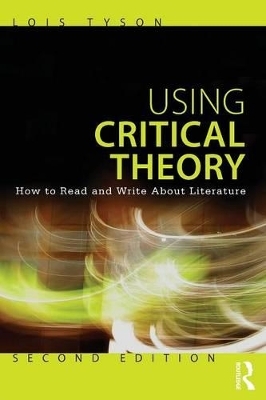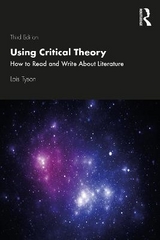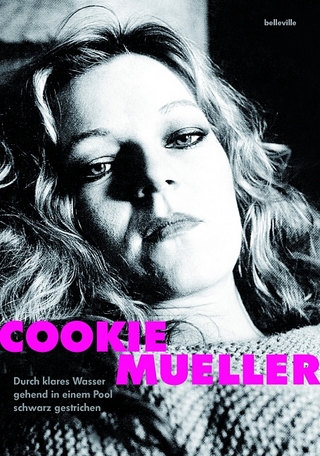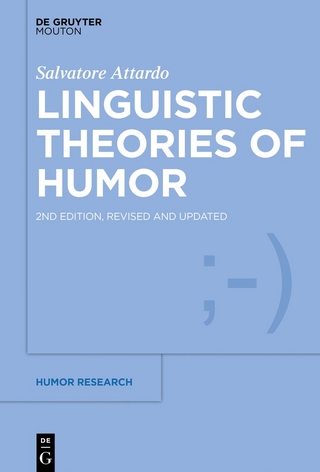
Using Critical Theory
Routledge (Verlag)
978-0-415-61617-1 (ISBN)
- Titel erscheint in neuer Auflage
- Artikel merken
Key features include:
coverage of major theories including psychoanalysis, Marxism, feminism, lesbian/gay/queer theories, postcolonial theory, African American theory, and a new chapter on New Criticism (formalism)
practical demonstrations of how to use these theories on short literary works selected from canonical authors including William Faulkner and Alice Walker
a new chapter on reader-response theory that shows students how to use their personal responses to literature while avoiding typical pitfalls
new sections on cultural criticism for each chapter
new ‘further practice’ and ‘further reading’ sections for each chapter
a useful "next step" appendix that suggests additional literary titles for extra practice.
Comprehensive, easy to use, and fully updated throughout, Using Critical Theory is the ideal first step for students beginning degrees in literature, composition and cultural studies.
Lois Tyson is Professor of English at Grand Valley State University. She is the author of Critical Theory Today: A User-Friendly Guide and Learning for a Diverse World: Using Critical Theory to Read and Write about Literature.
Preface for Instructors Acknowledgments 1. Critical Theory and You What Does Critical Theory Have to Do with Me? What Will I Learn about Critical Theory from This Book? Critical Theory and Cultural Criticism Three Questions about Interpretation Most Students Ask Why Feeling Confused Can Be a Good Sign 2. Using Concepts from Reader-Response Theory to Understand Our Own Literary Interpretations Why Should We Learn about Reader-Response Theory? Response Vehicles Personal Identification The Familiar Character The Familiar Plot Event The Familiar Setting Response Exercises Personal-Identification Exercise Familiar-Character Exercise Familiar-Plot-Event Exercise Familiar-Setting Exercise How Our Personal Responses Can Help or Hinder Interpretation Using Our Personal Responses to Generate Paper Topics Food for Further Thought Thinking It Over Reader-Response Theory and Cultural Criticism Taking the Next Step Exercises for Further Practice Suggestions for Further Reading 3. Using Concepts from New Critical Theory to Understand Literature Why Should We Learn about New Critical Theory? Basic Concepts Theme Formal Elements Unity Close Reading and Textual Evidence Interpretation Exercises Appreciating the Importance of Tradition: Interpreting "Everyday Use" Recognizing the Presence of Death: Interpreting "A Rose for Emily" Understanding the Power of Alienation: Interpreting "The Battle Royal" Respecting the Importance of Nonconformity: Interpreting "Don’t Explain" Responding to the Challenge of the Unknown: Interpreting "I started Early—Took my Dog Food for Further Thought Thinking It Over New Critical Theory and Cultural Criticism Taking the Next Step Questions for Further Practice Suggestions for Further Reading 4. Using Concepts from Psychoanalytic Theory to Understand Literature Why Should We Learn about Psychoanalytic Theory? Basic Concepts The Family Repression and the Unconscious The Defenses Core Issues Dream Symbolism Interpretation Exercises Analyzing Characters’ Dysfunctional Behavior: Interpreting "Everyday Use" Exploring a Character’s Insanity: Interpreting "A Rose for Emily" Understanding Dream Images in Literature: Interpreting "I started Early—Took my Dog" Recognizing a Character’s Self-Healing: Interpreting "Don’t Explain" Using Psychoanalytic Concepts in Service of Other Theories: Interpreting "The Battle Royal" Food for Further Thought Thinking It Over Psychoanalytic Theory and Cultural Criticism Taking the Next Step Questions for Further Practice Suggestions for Further Reading 5. Using Concepts from Marxist Theory to Understand Literature Why Should We Learn about Marxist Theory? Basic Concepts Classism Capitalism Capitalist Ideologies Competition Commodification The American Dream Rugged Individualism Religion Interpretation Exercises Understanding the Operations of Capitalism: Interpreting "Everyday Use" Recognizing the Operations of the American Dream: Interpreting "The Battle Royal" Analyzing the Operations of Classism: Interpreting "A Rose for Emily" Resisting Classism: Interpreting "Don’t Explain" Learning When Not to Use Marxist Concepts: Resisting the Temptation to Interpret "I started Early—Took my Dog" Food for Further Thought Thinking It Over Marxist Theory and Cultural Criticism Taking the Next Step Questions for Further Practice Suggestions for Further Reading 6. Using Concepts from Feminist Theory to Understand Literature Why Should We Learn about Feminist Theory? Basic Concepts Patriarchy Traditional Gender Roles The Objectification of Women Sexism The "Cult of ‘True Womanhood’" Interpretation Exercises Rejecting the Objectification of Women: Interpreting "The Battle Royal" Resisting Patriarchal Ideology: Interpreting "Don’t Explain" Recognizing a Conflicted Attitude toward Patriarchy: Interpreting "Everyday Use" Analyzing a Sexist Text: Interpreting "A Rose for Emily" Understanding Patriarchy’s Psychological Oppression of Women: Interpreting "I started Early—Took my Dog" Food for Further Thought Thinking It Over Feminist Theory and Cultural Criticism Taking the Next Step Questions for Further Practice Suggestions for Further Reading 7. Using Concepts from Lesbian, Gay, and Queer Theories to Understand Literature Why Should We Learn about Lesbian, Gay, and Queer Theories? Basic Concepts Heterosexism Homophobia Homosocial Activities The Woman-identified Woman Homoerotic Imagery Queer Theory Interpretation Exercises Rejecting Lesbian Stereotypes: Interpreting "Don’t Explain" Analyzing Homophobia: Interpreting "The Battle Royal" Recognizing the Woman-Identified Woman in a Heterosexual Text: Interpreting "Everyday Use" Using Queer Theory: Interpreting "A Rose for Emily" Drawing upon Context: Interpreting "I started Early—Took my Dog" Food for Further Thought Thinking It Over Lesbian, Gay, and Queer Theories and Cultural Criticism Taking the Next Step Questions for Further Practice Suggestions for Further Reading 8. Using Concepts from African American Theory to Understand Literature Why Should We Learn about African American Theory? Basic Concepts African American Culture and Literature Racism Forms of Racism Institutionalized Racism Internalized Racism Intraracial Racism Double Consciousness Interpretation Exercises Analyzing the Overt Operations of Institutionalized Racism: Interpreting "The Battle Royal" Recognizing the "Less Visible" Operations of Institutionalized Racism: Interpreting "Don’t Explain" Understanding the Operations of Internalized Racism: Interpreting "Everyday Use" Exploring the Function of Black Characters in White Literature: Interpreting "A Rose for Emily" Learning When Not to Use African American Concepts: Resisting the Temptation to Interpret "I started Early—Took my Dog" Food for Further Thought Thinking It Over African American Theory and Cultural Criticism Taking the Next Step Questions for Further Practice Suggestions for Further Reading 9. Using Concepts from Postcolonial Theory to Understand Literature Why Should We Learn about Postcolonial Theory? Basic Concepts Colonialist Ideology Othering Subaltern The Colonial Subject Mimicry Unhomeliness Anti-colonialist Resistance Interpretation Exercises Understanding Colonialist Ideology: Interpreting "The Battle Royal" Analyzing the Colonial Subject: Interpreting "Everyday Use" Exploring the Influence of Cultural Categories: Interpreting "A Rose for Emily" Appreciating Anticolonialist Resistance: Interpreting "Don’t Explain" Recognizing the Othering of Nature: Interpreting "I started Early—Took my Dog" Food for Further Thought Thinking It Over Postcolonial Theory and Cultural Criticism Taking the Next Step Questions for Further Practice Suggestions for Further Reading 10. Holding on to What You’ve Learned A Shorthand Overview of Our Eight Critical Theories A Shorthand Overview of Our Literary Interpretation Exercises A Shorthand Overview of the Range of Perspectives Offered by Each Theory Critical Theory and Cultural Criticism Revisited Critical Theory and an Ethics for a Diverse World Appendices Appendix A: "I started Early—Took my Dog" (Emily Dickinson, c. 1862) Appendix B: "A Rose for Emily" (William Faulkner, 1931) Appendix C: "The Battle Royal" (Ralph Ellison, 1952) Appendix D: "Everyday Use" (Alice Walker, 1973) Appendix E: "Don’t Explain" (Jewelle Gomez, 1987) Appendix F: Additional Literary Works for Further Practice Index
| Verlagsort | London |
|---|---|
| Sprache | englisch |
| Maße | 152 x 229 mm |
| Gewicht | 499 g |
| Themenwelt | Geisteswissenschaften ► Sprach- / Literaturwissenschaft ► Anglistik / Amerikanistik |
| Geisteswissenschaften ► Sprach- / Literaturwissenschaft ► Literaturwissenschaft | |
| ISBN-10 | 0-415-61617-4 / 0415616174 |
| ISBN-13 | 978-0-415-61617-1 / 9780415616171 |
| Zustand | Neuware |
| Informationen gemäß Produktsicherheitsverordnung (GPSR) | |
| Haben Sie eine Frage zum Produkt? |
aus dem Bereich



